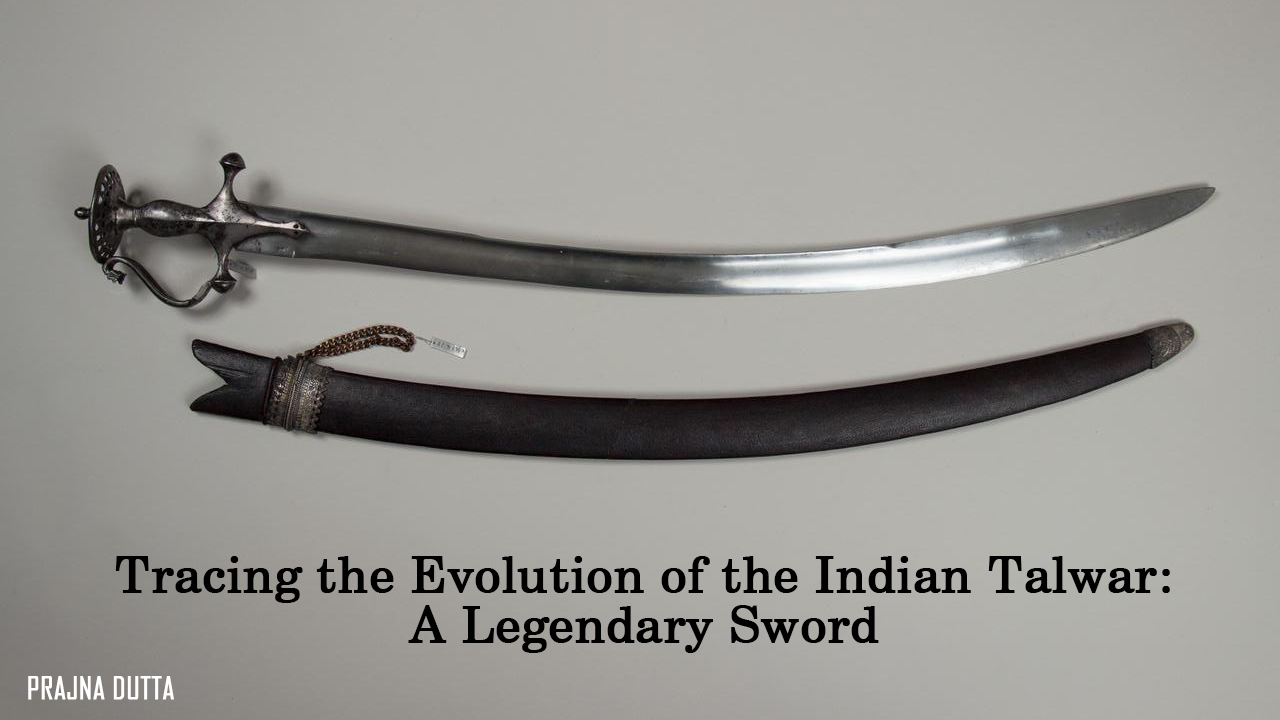Introduction:
The Indian subcontinent has a rich history of martial arts and weaponry, dating back thousands of years. The talwar, a curved sword renowned for its deadly effectiveness, holds a special place among India's traditional weapons. With a distinctive design and a legacy that spans centuries, the evolution of the Indian talwar reflects the diverse cultural and historical influences that have shaped the region. In this article, we delve into the fascinating journey of the Indian talwar, exploring its origins, development, and enduring significance.
Origins and Early Development:
The talwar finds its roots in the Indian subcontinent, with its earliest origins believed to date back to the ancient Bronze Age. Initially, it was a simple straight-edged weapon, akin to a large knife, used by the Indus Valley Civilization. Over time, as metalworking techniques improved, the talwar underwent significant changes in design and functionality.
Evolution of Design:
One of the most distinctive features of the talwar is its curved blade, which sets it apart from other swords. The curve begins near the hilt and gradually increases towards the tip, allowing for more effective slashing and slicing motions. This curvature is not only aesthetically pleasing but also enhances the weapon's cutting power and maneuverability.
The hilt of the talwar also witnessed evolution. The early talwars had a simple hilt with a grip made of wood or ivory. As time progressed, handguards (known as knuckle bows) were introduced to protect the wielder's hand during combat. These handguards varied in shape and size, reflecting the cultural influences of different regions within India.
Regional Variations:
As the talwar spread across the Indian subcontinent, various regions developed their own unique versions of the sword. For example, the Maratha talwar, originating from the western regions, featured a broader blade and a shorter curve, making it ideal for close-quarters combat. Conversely, the Rajput talwar, hailing from North India, had a longer curve, providing better reach and maneuverability.
Influence of Foreign Invaders:
The Indian talwar's evolution was significantly influenced by the arrival of foreign invaders. The Mughals, Turks, Persians, and Afghans introduced their own fighting styles and weaponry to the region. The talwar absorbed elements from these foreign cultures, resulting in variations like the Mughal talwar, which featured a more ornate hilt and a slightly broader blade.
Enduring Legacy:
The talwar's effectiveness in battle earned it a reputation as a fearsome weapon. Its curved blade allowed for devastating slashing attacks, while the handguard protected the wielder's hand during close combat. The talwar's versatility made it popular among both infantry and cavalry units, and it became a symbol of honor and prestige.
Today, while the talwar is no longer a weapon of warfare, it continues to hold cultural and historical significance. It is often seen in traditional Indian martial arts demonstrations, and replicas are treasured as collector's items or used in ceremonial events.
Conclusion:
The evolution of the Indian talwar showcases the ingenuity and adaptability of the ancient craftsmen who developed this iconic weapon. From its humble beginnings as a simple straight-edged blade to its evolution into a curved and deadly sword, the talwar is an enduring symbol of India's martial heritage. Its distinctive design, regional variations, and cultural influences have left an indelible mark on the history and culture of the Indian subcontinent.
The talwar's evolution reflects the dynamic nature of India's history, marked by the rise and fall of empires, invasions, and cultural exchanges. Each regional variation of the talwar tells a story of the people who wielded it, their unique fighting styles, and their response to the challenges they faced.
While the talwar's practical use as a weapon has diminished over time, its legacy lives on. Today, the talwar serves as a symbol of valor, martial skill, and cultural identity. It is often featured in traditional dance forms, such as the Kathakali and Bharatanatyam, where performers use talwar replicas to depict warriors and heroes. The talwar's presence in these art forms not only preserves its historical significance but also celebrates the artistic and cultural heritage of India.
Furthermore, the talwar continues to captivate collectors, historians, and enthusiasts worldwide. Its distinctive design and historical significance make it a sought-after item among weapon collectors and antique enthusiasts. Many museums house exquisite examples of talwars, showcasing their craftsmanship, regional variations, and historical context.
In conclusion, the evolution of the Indian talwar mirrors the evolution of Indian civilization itself. From its humble beginnings as a utilitarian weapon to its transformation into a symbol of martial prowess and cultural identity, the talwar's journey embodies the resilience, adaptability, and diverse heritage of India. As we appreciate the artistry and historical significance of the talwar, we gain a deeper understanding of the rich tapestry of Indian history and the legacy of its martial traditions.

Comments